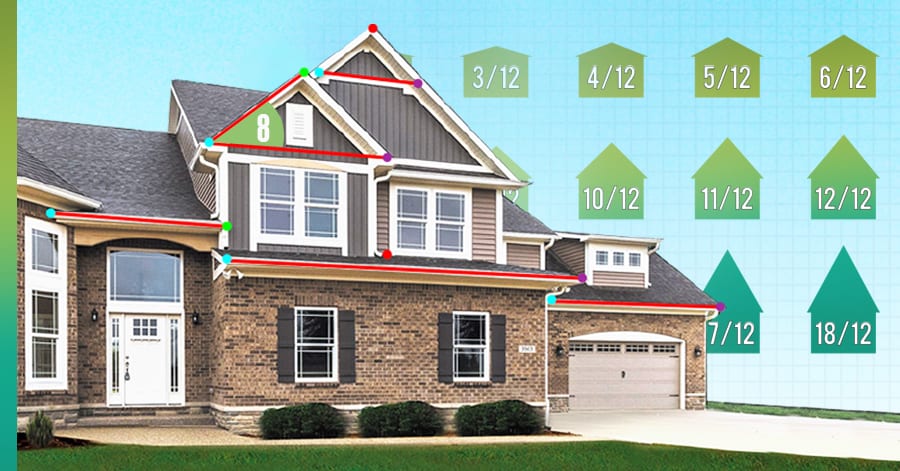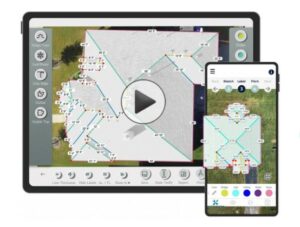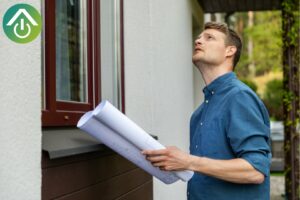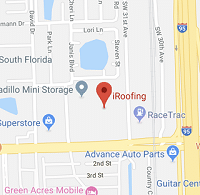How to Measure Roof Pitch
A lot of good roofing contractors can judge the approximate roof pitch measurements by just eyeballing it. If their estimate is off a degree or two, so what? That’s what a waste factor is for, right? No, not exactly.
Why, in this day and age, should any dimension of a roof measurement require guesswork? It shouldn’t. Measuring roof pitch can be done precisely and in only a matter of seconds – literally seconds – using a roof pitch app! Roofing software replete with a roof pitch calculator app is all you need. You can determine all the precise dimensions, including the roof pitch measurement, from anywhere at anytime. No more needless visits to the job site with handheld gadgets to figure out pitch again.
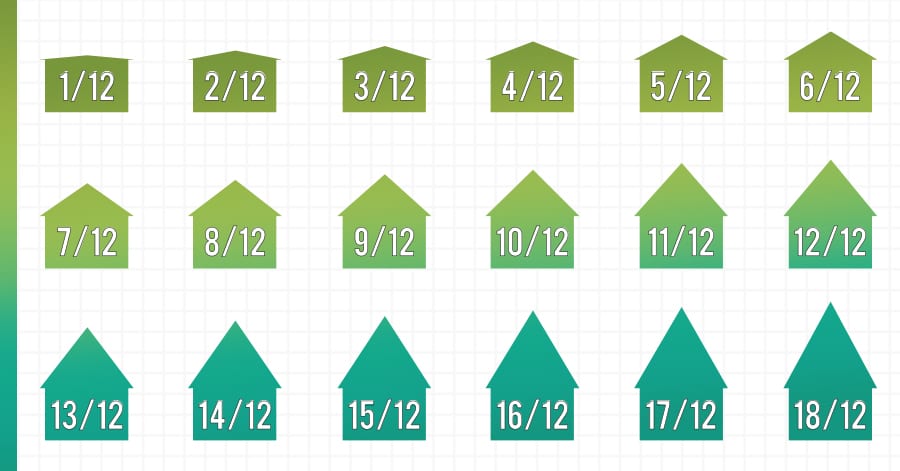
Roof Pitch Finder Tool
Many roofing professionals will determine an accurate pitch by climbing atop a home or building and using a conventional roof pitch measurement tool, such as a pitch guide or a level and a tape measure. GAF and other roofing suppliers have a nifty little clear plastic card that you just hold up to a home or building while you stand fifty feet away. Match the lines on the see-through card to the roof angle and you can come close to approximating the pitch of the roof, but it won’t reflect the accuracy of a smart roof pitch angle app. One of the how-to videos we found on YouTube outlines a method involving a level, a framing square, a pencil, and a piece of wood. Hello? This isn’t the 18th Century!
There's a Roof Pitch App for You...
Roofing software with pitch detection can make your material orders much more accurate; save you trips to the job site, and satisfy the property owner through your attention to detail and effort to minimize waste. When all of your measurements are duly calculated and presented neatly to clients, they’ll know they’re not overpaying for guesswork. Better yet, your accurate order for materials won’t come up short towards the end of an installation, requiring a second order and likely delaying the job. Property owners usually aren’t happy when their roof job is late getting completed, especially when they know the delay could have been avoided. So, stop the guesstimates and get on board with roofing technology.
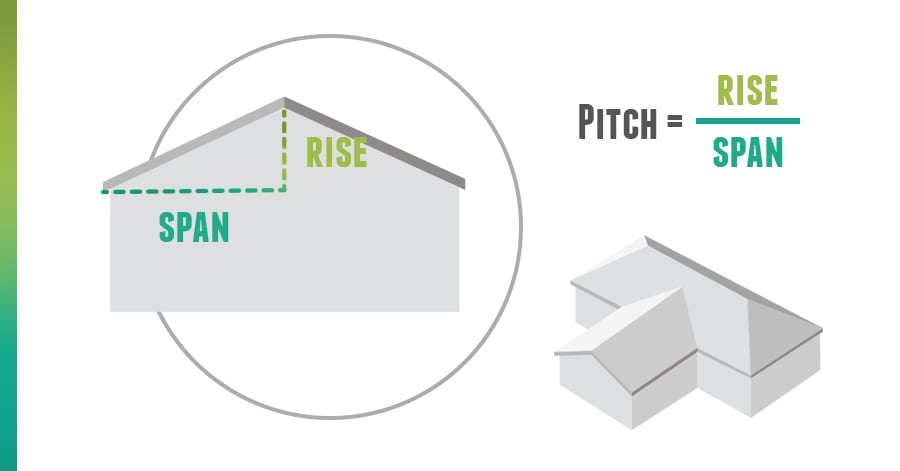
What is Roof Pitch?
Picture a slope. Measure 1 foot up from the eave. Then, imagine being able to measure straight down through the roof to a point level with the eave. That distance – say its 4 inches – will be the first number in the ratio that defines the roof pitch. In this case, 4:12. This means there is a 4-inch rise every 12 inch span up the slope. It sounds like a simple calculation, but what makes it tricky is the fact that you can’t take a measurement THROUGH the roof and if you could, how would you know where’s the point even with the level of the eave. Of course, there are a few ways to measure pitch in a conventional way as mentioned above, all of which require you to be onsite.
Go Ahead. Make Our Day.
Would you believe us if we told you we can quickly calculate the pitch with a roof pitch app for Androids and a roof pitch app iPhone? You can do it simply from a street view accessible instantly thanks to iRoofing’s built-in mapping feature, so go ahead. Make our day! Try the iRoofing Roof Pitch Measurement app and never lose money on an inaccurate roof pitch calculation.
Message us on Facebook @iRoofing with any home address and we’ll give you a roof pitch, lickety-split. We’ll screen-record our measurement process to show you just how fast you can do it. It’s not magic. It’s software.
The Impact of “Guesstimating”
Let’s say you landed a roofing project on a nice big two-story home. You measured all the slopes including dormers. You estimated the pitch at 8:12. Your total sq. ft. of roof area amounted to 2,450 exactly. Therefore you will need to account for 24.5 SQs in your estimate for labor, materials, and accessories. Unfortunately, your pitch estimate of 8:12 wasn’t accurate. The roof pitch was actually 10:12 and you actually needed to account for 26.5 SQs instead. Your error translates into about an 8.5% variance on the short side. Unless you calculated a sufficient waste factor to cover your shortage, you’ll end up needing more material, plus the job will take more time to complete since you’re needing to cover more area, and on a steeper slope. Even if your waste factor was 10%, you’ll be cutting it close. If your waste of materials is more than 3.5 %, you’re going to need to order more materials further delaying the job and potentially aggravating the property owner!
So, how does an 8.5% variance impact your costs for the job? Figure about $900 per SQ for a tile roof. Your estimate was 2.1 SQs too low, so be prepared to eat $1,800 or face the property owner with the increased cost and hope they don’t slam you on Yelp. For a shingle roof your guesstimate only sets you back $900, but…it’s $900 for Pete’s sake! Your contracting business might be having a great year, but you’re not Microsoft Corporation!
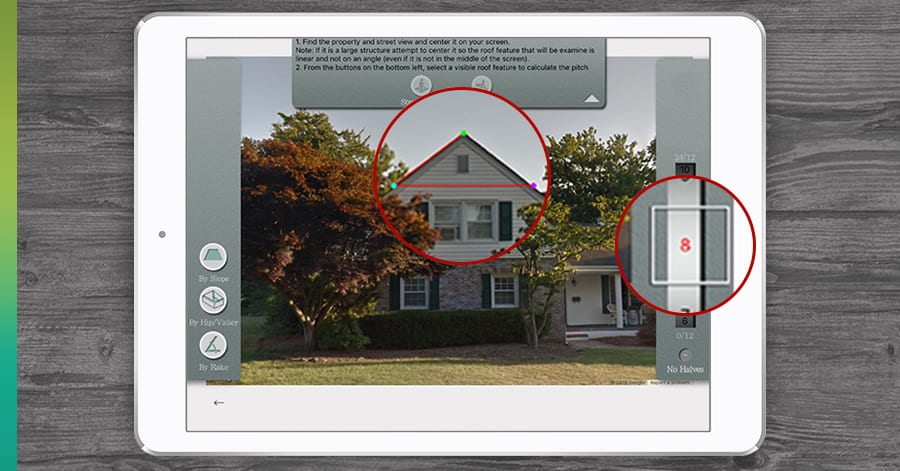
Get Smart. Get Software.
An app with a built-in roof pitch measurement tool, like iRoofing, only costs $129 per month. It will pay for itself quickly by just providing you the means to get your pitch estimates correct, not to mention all the time and expense it will save you on performing unlimited, do-it-yourself roof measurements and estimates.
iRoofing has developed a formula for applying the geometry involved in pitch measurement without you having to pull out a calculator. All you’ll be doing is drawing a couple of lines on your touchscreen tablet or Android phone. You need to see it to believe it.
So, no more wild pitches. You’ll be throwing strikes when you use roofing software to accurately measure roofs, precisely detect pitch and generate spot-on estimates.
Being accurate allows you to have a more competitive bid, since you can now build out your costs and desired profits more accurately.



